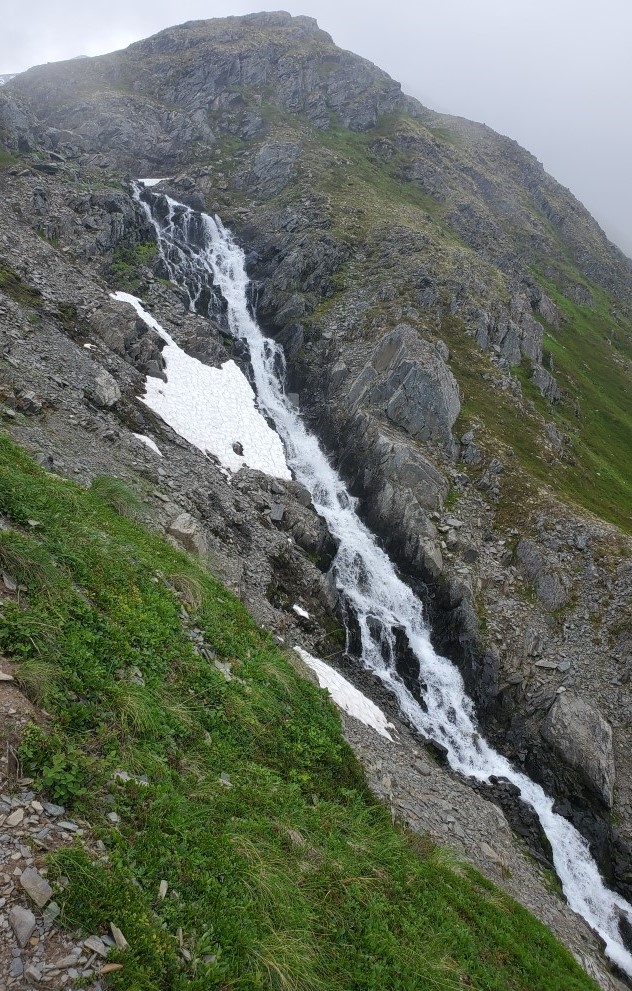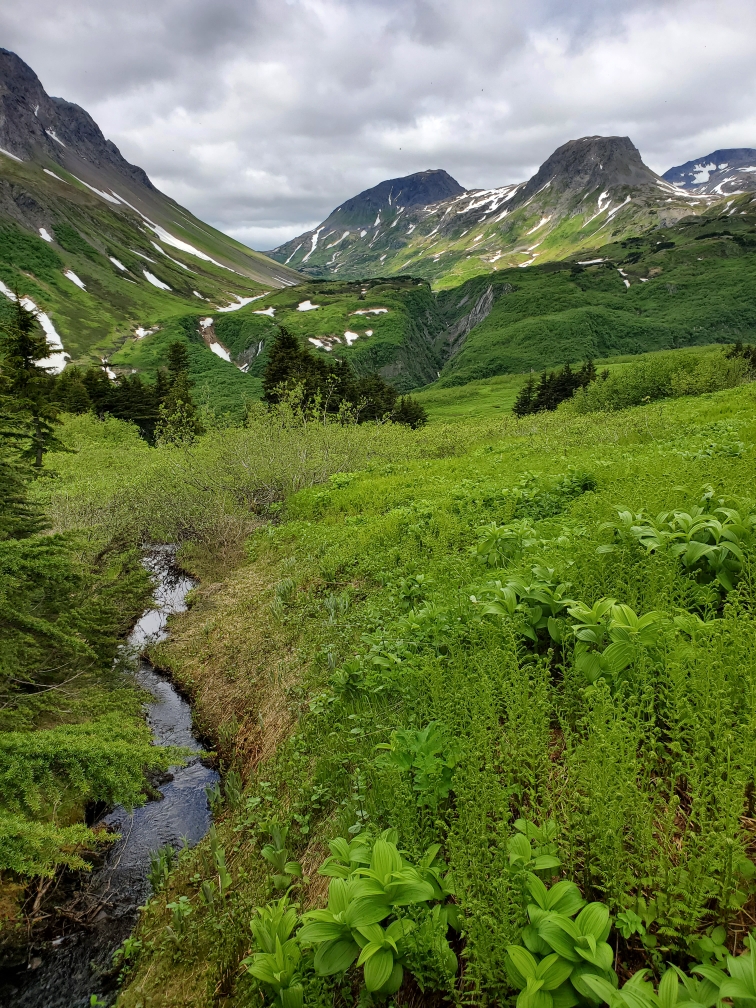Clouds come and go, but the mountains remain. The dew point temperature in the morning is typically always reached here with the cooler mornings. The increased condensation in the atmosphere makes the mountains invisible, as the surrounding clouds block your view for miles. But now that we’ve finally had 70 degree days up here, the warming temperature deviates from the dew point temperature, and all the clouds evaporate to leave a stunning view. This is one of the best ways to experience the Alaskan alpine hikes, almost as if mother nature is revealing a secret to you.


These have been my favorite places to go on the Chugach, although the flowers are still barely emerging. As my eyes scan across the land, surprisingly it is the smallest plants that catch my attention. Drosera angelica, the English Sundew, is inconspicuously about 5 cm tall and found in most peatbogs in Southcentral Alaska. This interesting character is a carnivorous plant, that uses leaves covered in red mucilaginous glands with a resin tip to lure in their prey. Once the unlucky insect is trapped, the tentacle like structures then bend toward the prey and center of the leaf to maximize contact. This unique adaptation is a survival technique to live in nitrogen deficient areas, such as bogs.

Another plant we had to get down on our hands and knees to search for is the rare Aphragmus eschscholtzianus, or Aleutian Cress. This mustard is so small, it was first described in the last 75 years. One of the terrestrial crew’s projects is to monitor the subalpine valleys saturated with snowmelt to observe long-term population change. This involves going to previously mapped plots, finding due north and due east from a monument stake, measuring a 5×4 m plot, and using quadrats to measure Aleutian Cress abundance in a given area of the plot. This work also involved traversing the hillslopes off trail to ideal habitat areas to find new populations. At first I hated it, as this work is like finding a needle in a very large haystack. After hiking all day, our crew finally found a population of about 5, giving us all a euphoria and sense of accomplishment. I thought I could rule out rare plant monitoring from my career goals but instead, this experience has only made me more indecisive.


